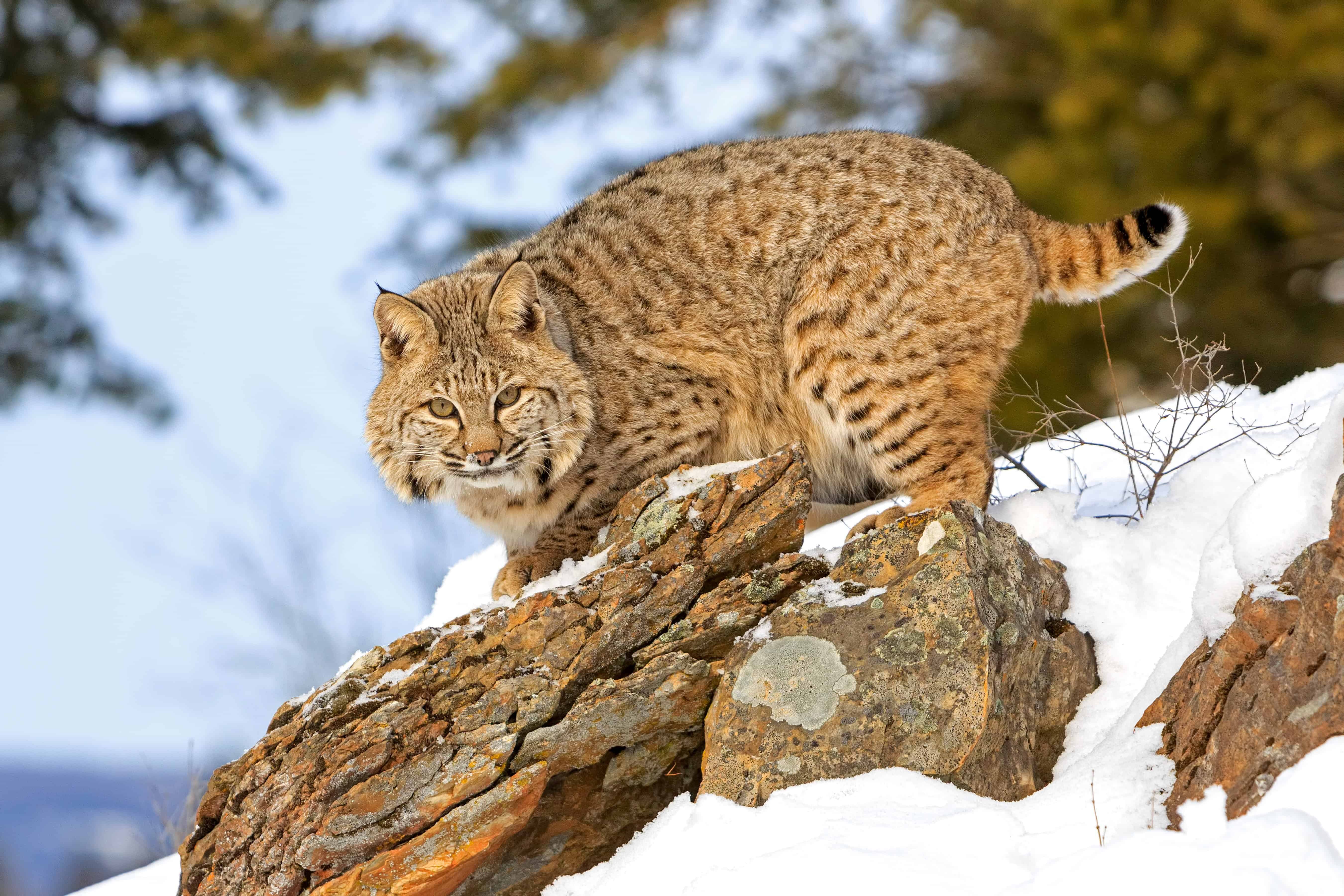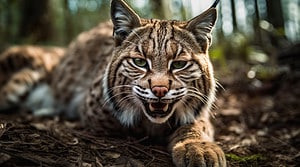In the winter, bobcats have to get creative when hunting for prey. In this video, you watch a bobcat change its strategy in hopes of obtaining a meal. Though it starts in the water, it changes course and manages to make its way up a tree instead.
Watch the Fascinating Footage Below!
How Do Bobcats Survive in the Winter?
Bobcats have an impressively high metabolism. Unlike other animals that either migrate or hibernate during the winter season, bobcats remain active even as temperatures drop. When there is deep snow, bobcats are at a disadvantage because of their small feet.

During the winter season, bobcats take shelter in dens.
©Daniel Friend/Shutterstock.com
Though they may go for rodents when the weather is more favorable, bobcats have also attacked animals as large as deer to ensure their sustenance during the winter months. They stay in dens for shelter. These dens may be located in caves, under rock formations, or even under logs.
How Large Do Bobcats Get?
Fully grown bobcats typically weigh between 15 and 35 pounds and measure 30 to 50 inches in length. Size can differ based on gender, with male bobcats being approximately 33% larger than females. Their size is predominantly influenced by their geographical location.
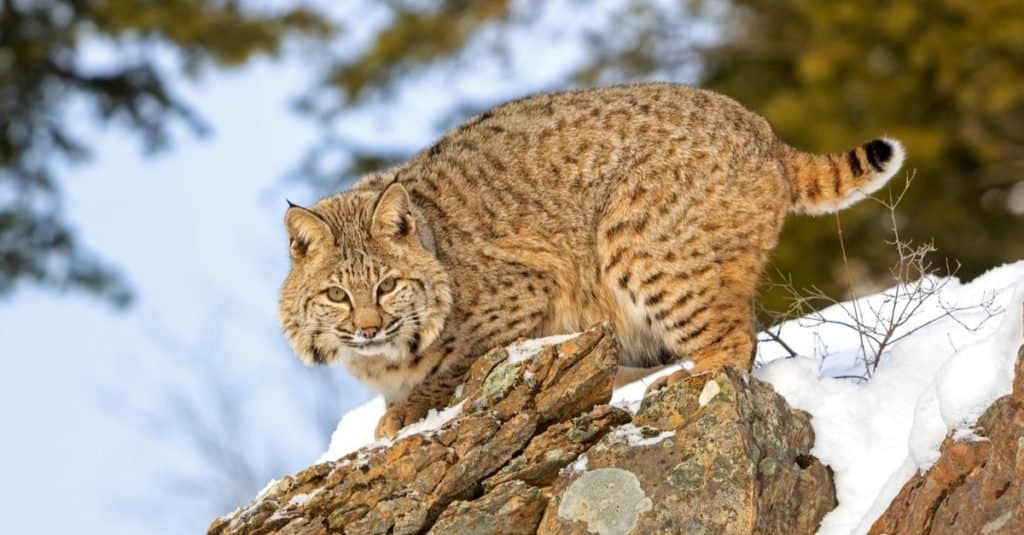
Male bobcats are larger than female bobcats.
©Jack Bell Photography/Shutterstock.com
Wildcats that mostly live in southern regions tend to have smaller bodies, whereas those inhabiting colder northern areas exhibit larger body sizes.
Can Bobcats Swim?
Bobcats are good swimmers. However, just because they’re good at it doesn’t mean it’s their favorite activity. In a pinch, if they need to immerse themselves in water and swim across, they complete the task expertly. However, if they can avoid getting submerged in the water, they do.
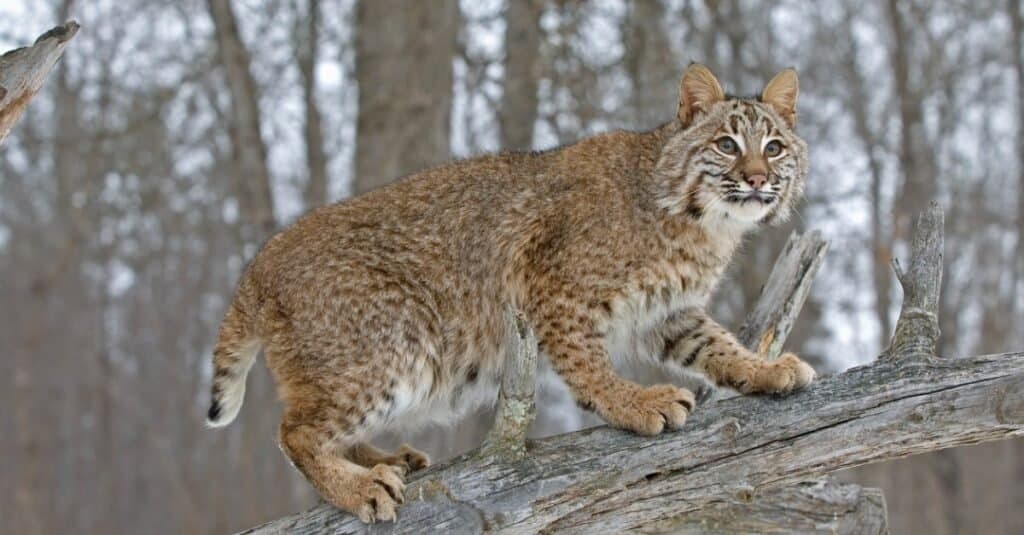
Bobcats are actually great swimmers, although they don’t necessarily love the water.
©iStock.com/JohnPitcher
They’d rather hang out on the outskirts of a water source or jump on rocks than swim across if they have that choice. They are much more skilled when it comes to climbing trees and don’t hesitate as much if they need to reach prey this way.
Is it Normal Behavior for Bobcats to Climb Trees?
Bobcats are not an endangered species – and their climbing ability is one of the many reasons for that. These solitary predators have a strong will to survive and many skills in their toolkit. Climbing trees is easy for these fierce felines because they come equipped with powerful back legs, long claws for grasping and the amazing anatomy of all cats. Cats are able to balance so well that they even survive falling great distances unharmed – and can also jump from great heights onto unsuspecting prey. As the video shows – they can also scoot up a tree fast enough to grab equally nimble squirrels.
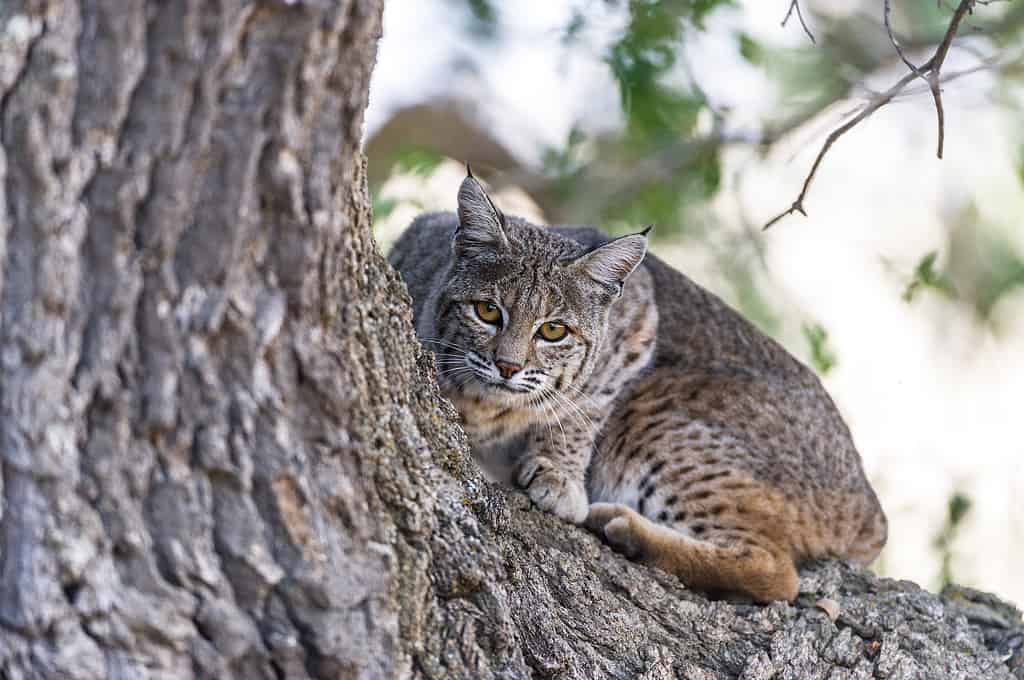
Bobcats often hunt from trees where they can view prey unseen from above before jumping on top of it.
©iStock.com/brentawp
The bobcat climbs trees for other reasons – including using a wide tree branch for a quick nap or to rest after a tiring hunt. While they prefer to sleep in one of their burrows – a tree can offer temporary shelter where they can rest undisturbed. If a bobcat encounters a larger animal or a human and suddenly becomes prey – their climbing skills can save their lives. Animals like wolves can’t follow them into the treetops – and humans with guns are more unlikely to land their shots up from the ground amid the camouflage of leaves and branches. Bobcats are so fast that they are able to run up a tree before they are even seen by a predator.
It is easy to see why bobcats are one of the most successful hunters and survivors in the cat family with the many skills and natural abilities they have at their disposal. They are fast, stealthy, intelligent, highly adaptable, and physically fit. Bobcats can run, swim, fight, hunt, and climb their ways to surviving and thriving in the wild, ever-changing world.
Bobcat Hunts in the Winter
The video below is a clip from BBC Earth’s Planet Earth II. When it starts, you watch snowflakes fall on rocky terrain. Next, a closeup of a bobcat traversing deep snow. The narrator explains that the valley being filmed is blessed.
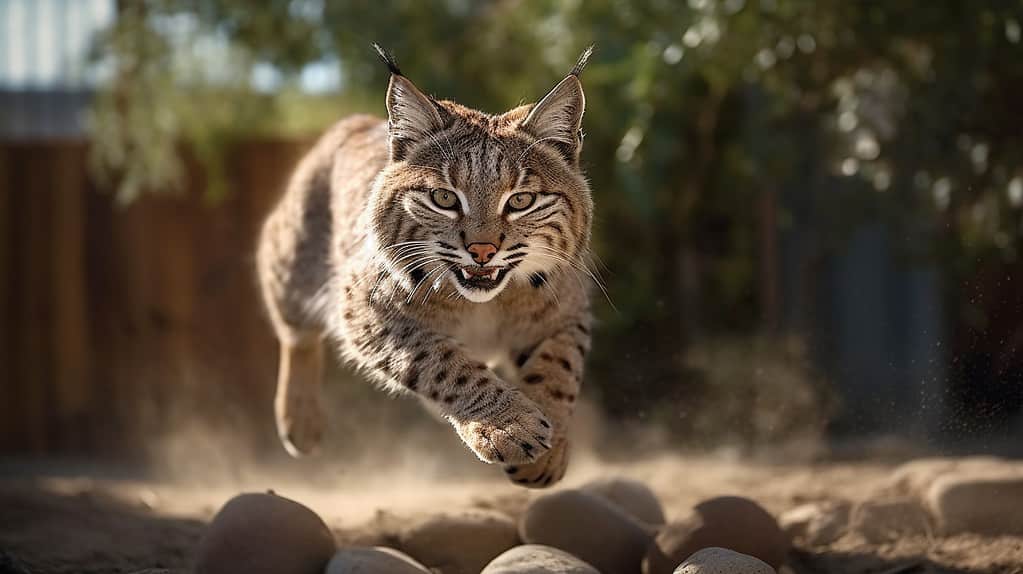
The river never freezes because it’s fed by a volcanic hot spring. The water remains 50 degrees warmer than the environment around it. The river calls forth a variety of wildlife as it provides the sustenance they need. The bobcat approaches the water, and the narrator explains hunting is more difficult for cats unaccustomed to getting their feet wet.
The bobcat takes a long leap toward another rock in the water and makes it but gets wet. It shakes the water off its feet. Then it spots some golden-eyed ducks. It approaches from the shore and attempts to snatch one but is unsuccessful. Its hunting skills in the water are not as refined.
The bobcat decides to try the other side of the river and swims across. It spots something up in the branches of a tree. Then, it shows its prowess, quickly climbing up six meters and descending with a squirrel in its mouth.
Thank you for reading! Have some feedback for us? Contact the AZ Animals editorial team.

